The future of guitar gear
Where is the next generation of guitar gear headed?
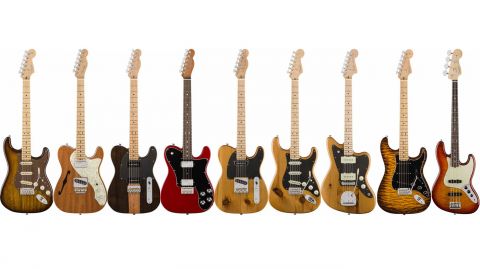
1. Tonewoods Are A Changin’
WORLD GUITAR DAY 2017: While each year new guitar launches take well-travelled paths, sometimes guitars, amps and effects point to new directions in tone. Here we gaze into a crystal ball and reflect on new trends witnessed at NAMM 2017 to speculate on where guitar is headed – and examine the innovative instruments that are leading the charge…
Fender has put the spotlight on recycled and unusual woods with its Exotic Collection this year. This range promotes ‘rescued’ mahogany from Honduras and pine bodies from wood that dates back more than 100 years as part of the Buckstaff Furniture Company’s facility in Oshkosh, Wisconsin. Shedua (ovangkol) and blackwood are other woods used in this limited range.
Other major players such as Taylor and Martin this year also launched guitars with some less-used woods. Martin’s DC-16 and DC-16E show off sycamore back and sides albeit with a mahogany-like colour; the OMC-16E uses Sitka spruce and cherry certified from a sustainable source by the Forest Stewardship Council. The new GPCRSG and DCRSG advertise back and sides from mutenye (Guibourtia arnoldiana), from the same genus as shedua/ovangkgol (Guibourtia ehie). Taylor has replaced the layered rosewood used on one of its GS Mini-e models with layered walnut for this year, also used in the 100 series.
Meanwhile, some makers are looking at options in the light of the unresolved rosewood availability issue. Shergold recently launched their range of electrics featuring solid Indonesian rosewood necks and fingerboards.
Join us in celebrating World Guitar Day 2017! Get playing, and share your best guitar videos, pictures, tips and stories with hashtags #WGD17 #worldguitarday

2. Micro Rigs shrink again
Take a walk round a major show like NAMM and you’ll find growing numbers of improbably small amps powerful enough to gig with. While miniaturising amps to pedal size has been possible for some time, making them sound good is more problematic. But that problem is getting ever closer to being solved.
Vox, for example, have a new range of 50-watt Nutube amps. Powered by a combination of a class-D power amp and a flat, miniature triode valve invented in the 1960s to power the display of an alarm clock. Vox’s MV50 NuTube amps come in three flavours: Clean, AC and the high-gain Rock, with custom-designed cabs. Vox say they’re not just as good as a small backup or practice amp, but could be used to build inexpensive stereo rigs, as tone conditioners for a multi-effects unit and more. Vox aren’t the only ones pursuing micro-sized amps, as Hotone’s dubiously named 50-watt Britwind dual-channel micro amp with effects loop and cab simulator attests.
For those running pedalboards and preamps straight into the desk, it’s possible to lend that tone some air and authority in the form of pedal-sized cabinet emulators, notably DigiTech’s CabDryVR pedal loaded with 14 guitar and bass cab models.
Finally, the most complete solution for getting amp tone from a pedal is offered by Atomic, whose popular and powerful Amplifire modelling unit has been boiled down to its essentials in the pedalboard-friendly and purposeful new Ampli-Firebox pedal, which packs in nine amps and three cab models, plus reverb, into a box no bigger than most twin-channel distortion pedals. One to try, if you want tone on the fly.
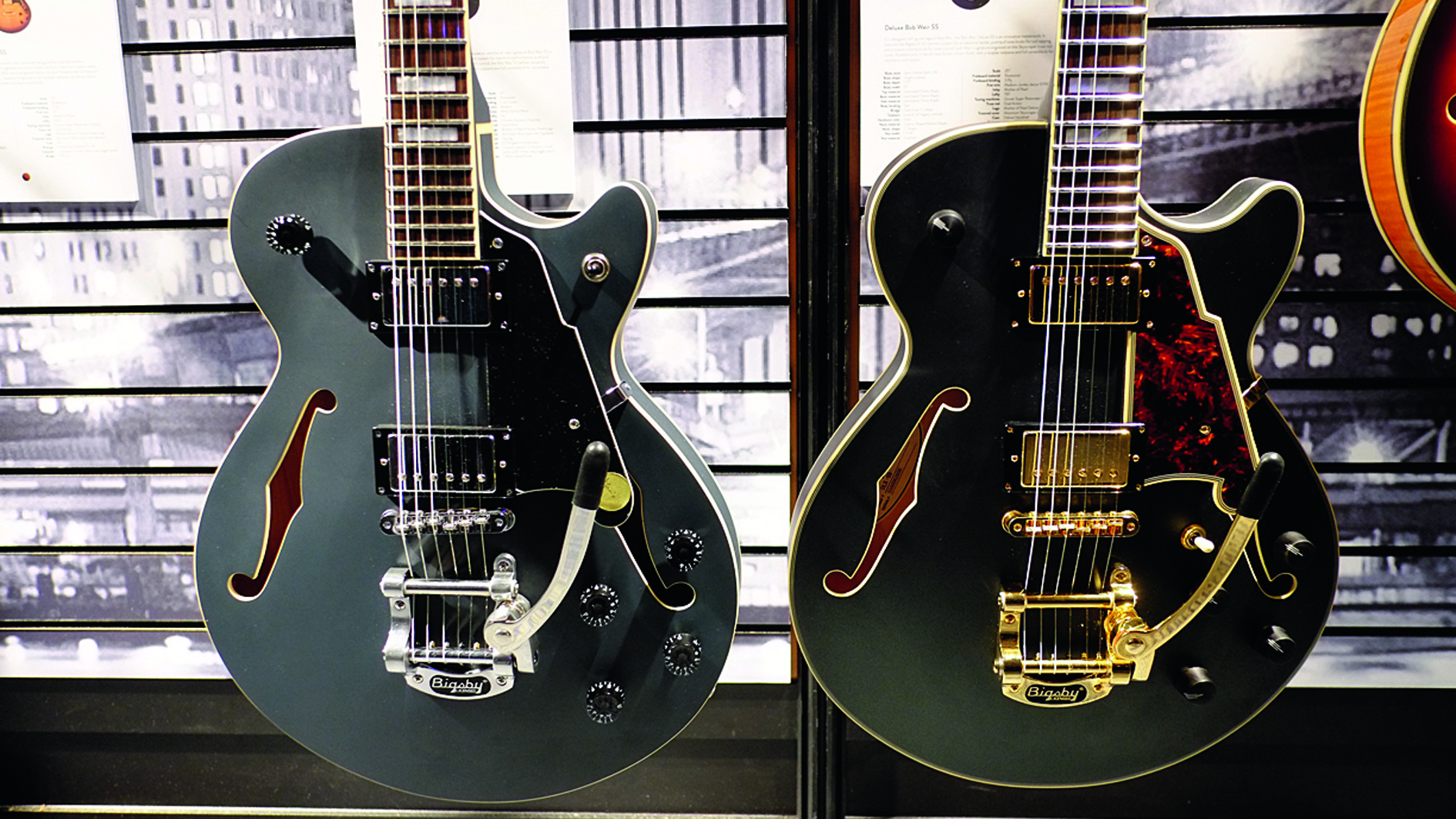
3. Neo-Retro Rules
D’Angelico’s comeback seems to get bigger each year and they’re hardly focusing on original John D’Angelico designs. This year, they’ve added the lower priced Premier models from Indonesia and, last year, they announced the upmarket Deluxe range with a matt midnight black vibe, Seymour Duncan pickups and a six-way toggle switch. The ’Dead’s Bob Weir is a new signature artist with a Bigsby-equipped SS in both the Premier and Deluxe ranges.
Guild re-launched the S-200 T-Bird last year, but its Jazzmaster-style switching system, not to mention its, ahem, tricky vibrato wasn’t for everyone. This year’s T-Bird ST ditches that vibrato for a tune-o-matic and stud tailpiece and it comes in three versions: two with Guild’s LB-1 chrome-covered humbuckers in Antique White and Cherry Red; the third comes in Pelham Blue with tortoiseshell pickguard and dual Guild ‘Franz’ P90-style pickups.
T-Rex’s remake of the Binson Echorec completed an ‘updated-retro’ trend.’
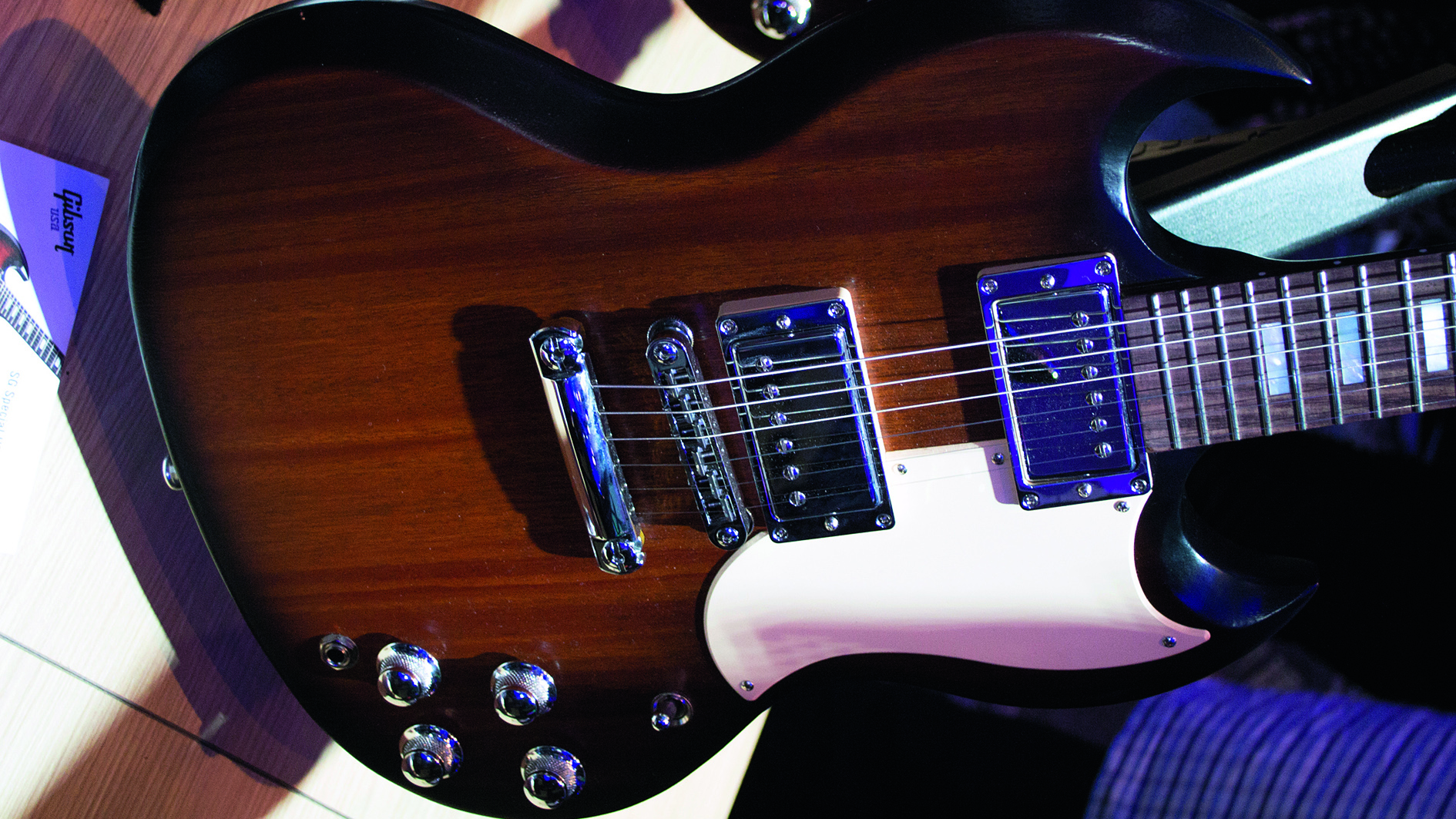
4. Prices defy reason
If the backdrop to this year’s NAMM show was the post-Brexit price hikes, not to mention the rosewood shortages, another talking point was just how the heck can Gibson create a ‘Made in the USA’ guitar range – their new S Series (conceived for online retailers) – that kicks off at $399? We grilled Gibson’s Jim DeCola who maintained that the wood parts are fabricated and finished in Nashville, but not surprisingly the parts and electronics are sourced overseas adding that “the only soldering we do is the earth wire.”
But it’s not just the S Series; as ever, Gibson has some very low-dollar ‘Made In USA’ guitars under-pinning its new 2017 electric range, which kicks off with the $799 Les Paul Faded T and the $899 Les Paul Tribute T, before there’s quite a leap to the $1,499 Les Paul Studio T. In contrast PRS’s USA-made S-Series kicks off at $999 with the all-mahogany Standard 22 Satin.
Taylor, Martin and Fender all use Mexico for their low-end and Taylor’s Academy series was another of the show’s talking points: bare-bones, but quality all-wood guitars that kick off at $668. Translated into pounds that’s £563, which seems peanuts for a Taylor guitar.
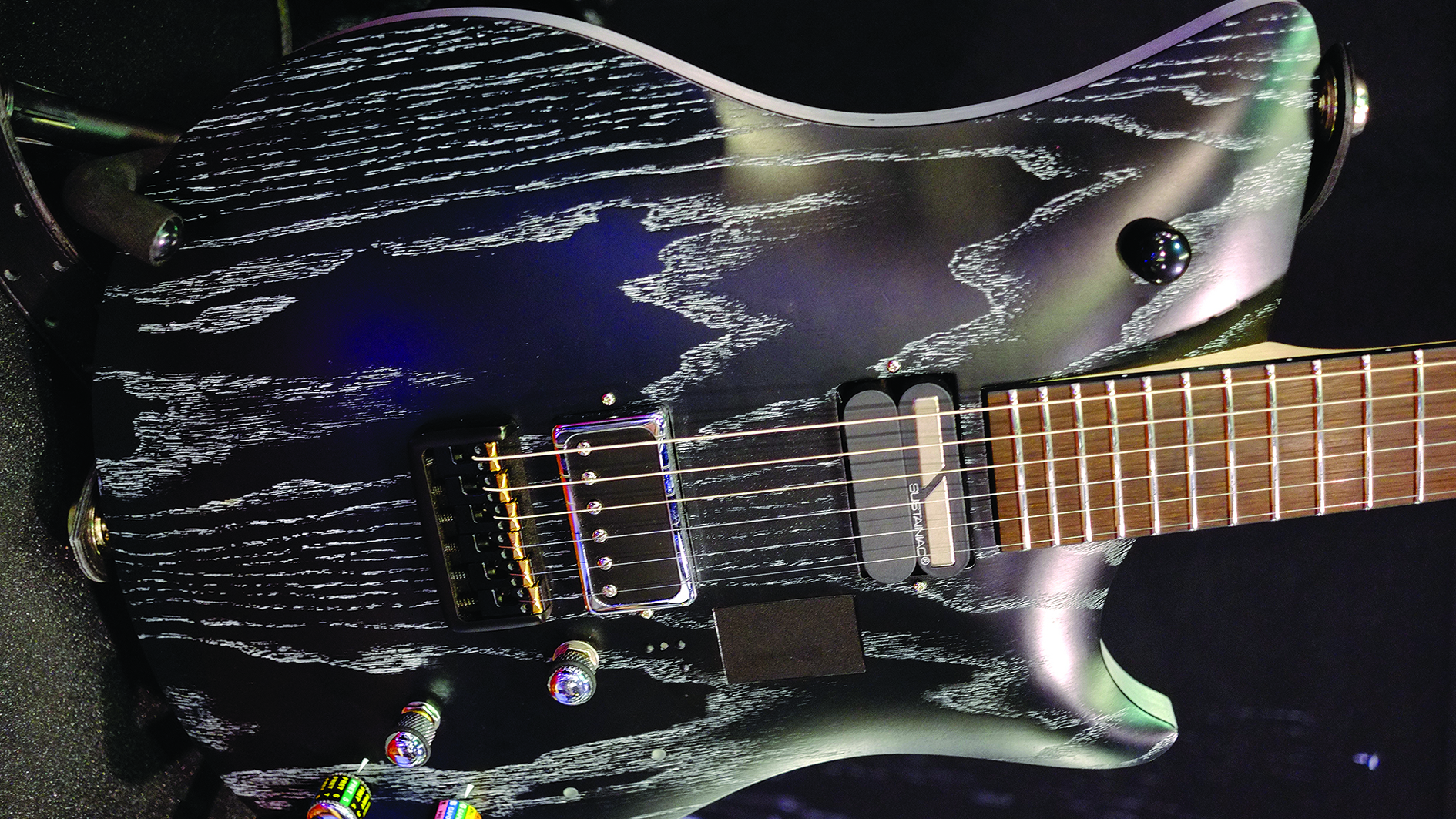
5. Guitars get smarter
While the future of the electric guitar lies in the comforting blanket of its past, there are still plenty of bold innovators beavering away in their sonic laboratories. Line 6 surprised most by using niche technology – its Variax digital modelling engine – to embrace a new mini-trend, the baritone, all aboard a fairly modernist-shaped electric, the Shuriken. Line 6’s president, Marcus Ryle, commented it was “our first artist-designed instrument”, the artist being Stevie MacKay (Twelve Foot Ninja), while its 27-inch scale along with Variax’s alternative tuning feature means conventional guitar tuning is completely out of the window.
Swiss makers Relish revived the ‘concept’ guitar this year, not actually meant for production, but just to show what they can do. Designed with Thomas Nordegg (Steve Vai’s tech), it includes a Sustainiac sustainer, GTC Revpad touchpad control, Line 6 wireless, Antares Auto-Tune ATG-1 all loaded into a hugely innovative Jane model. Less radical is the latest Fret-King/Fishman tie-up to produce three Fluence pickup-equipped guitars. Using Fret-King’s Corona, Country Squire and Esprit platforms with Fluence Strat-style, Tele-style single-width and humbuckers respectively, these dual voice pickups, with their solid-core coils, absolute hum-cancelling and rechargeable battery power, epitomise ‘familiar’ looks but have cutting-edge technology.
After the rather out-there 2015 line, innovations on Gibson’s High Performance range have been reined in so we’re getting a shaped access neck joint, rolled fingerboard edges, a titanium zero fret (conventional width) and the latest generation G-Force tuners, boasting faster and more accurate use. Equally modernist are the electronics. Each of the four controls is a pull/push switch engaging tap or split for each pickup, out-of-phase, and inner or outer coils (for the split function); the options are handled by a row of five internal DIP switches along with high pass filters for each pickup and transient suppression – a sort of passive limiter. Even the selector switch has new gold contacts, a knurled metal cap and is quieter, less microphonic, in use.’
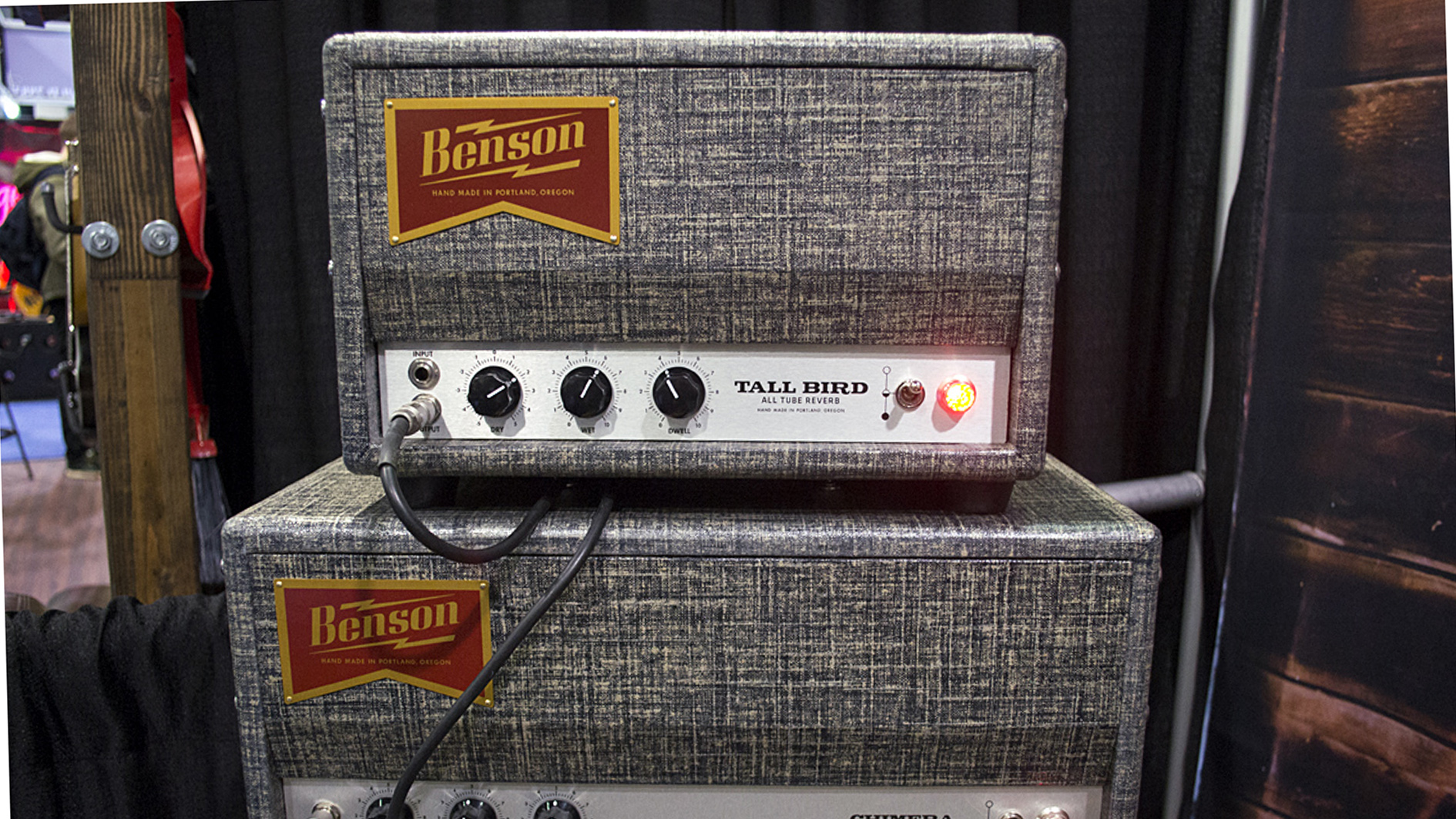
6. Ultra-Boutique amps and effects ascend
Though some of it might be hard to get hold of in the UK, there’s some stunning hand-built gear out there. We’ve been particularly impressed with the pedals of Brazilian/US effects maker Beetronics. Not only is every one of their Custom-grade pedals etched with a beautiful and totally unique finish, but the circuits are even built on honeycomb-shaped boards. At $280 for one of their WhoctaHell low-octave fuzz pedals, they’re not bonkers expensive considering the amount of hand-work involved – and they sound scuzzily brilliant too.
Likewise, Benson amps by Seattle guitar tech Chris Benson whose designs, unusually, aren’t based directly from classic Fender or Marshall templates. Typical of his work is the 30-watt Chimera, a valve-rectified head powered by a quad of 6V6 valves with point-to-point construction and audiophile-grade components throughout. There’s pleasingly few dials, too – just Volume, Treble and Bass.
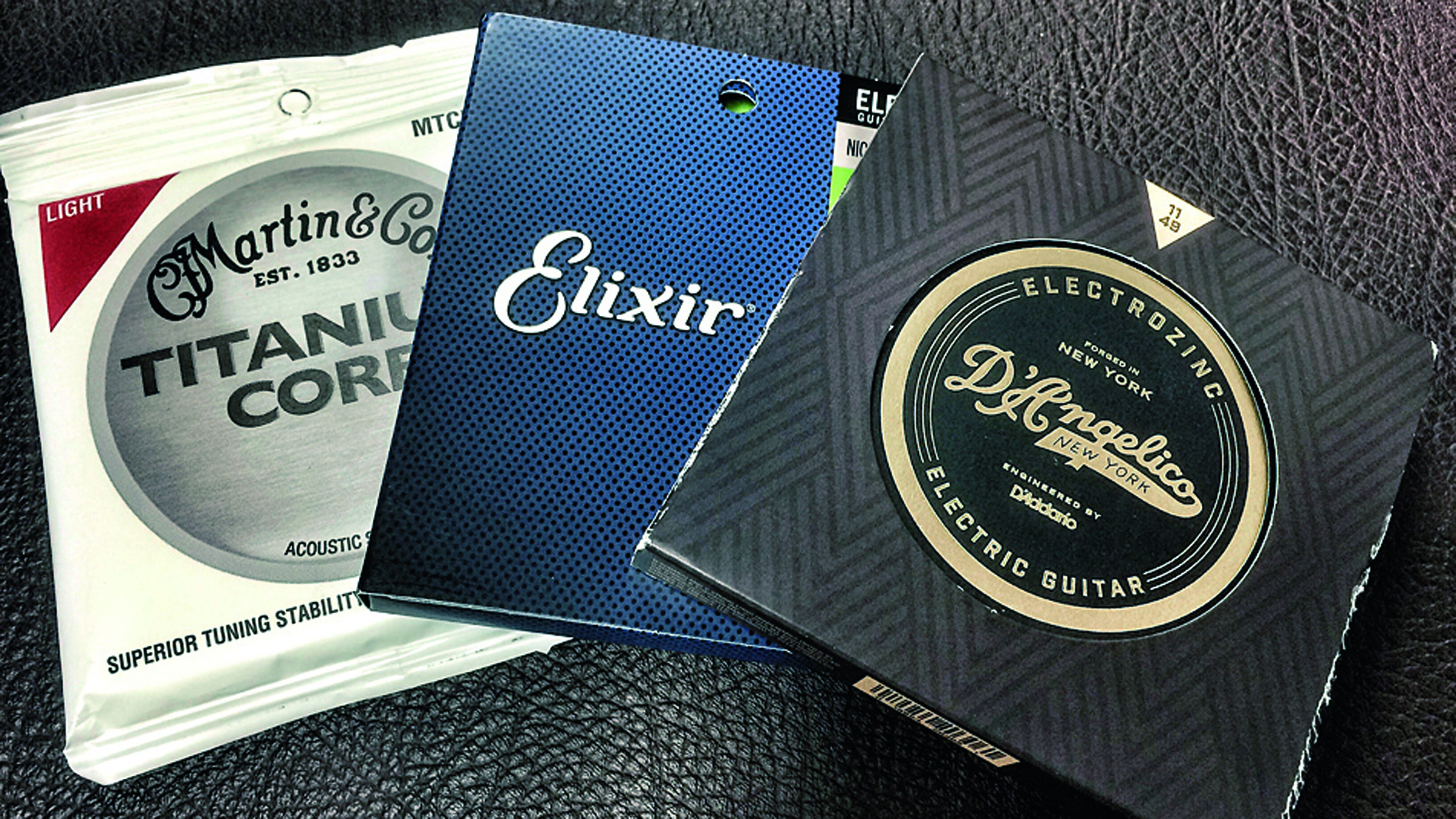
7. The evolution of string theory
Your next favourite tone might not come from a pickup swap – but a change of strings. Ernie Ball led the way with its new Paradigm range of strings, which it claims are virtually unbreakable – a huge deal for the company – and they are backing that claim by offering a refund for any Paradigm strings that break or rust within 90 days of purchase. Martin, meanwhile, had to devise totally new string-winding procedures to create its new Titanium Core acoustic strings, which use the ultra-strong, lightweight metal to offer – they claim – superior tuning stability, playing comfort and corrosion resistance.
It’s back to the future for D’Angelico with their Electrozinc strings, engineered by D’Addario, and based on zinc-coated, Bethanized Steel strings developed in the late 30s. D’Angelico claim a fulsome, vintage-focused tone from this long-overlooked process.
Finally, this year coated string experts Elixir introduced their Optiweb coated strings for electric – promising long life with comfy, natural playing feel if their previous acoustic efforts are anything to go by.
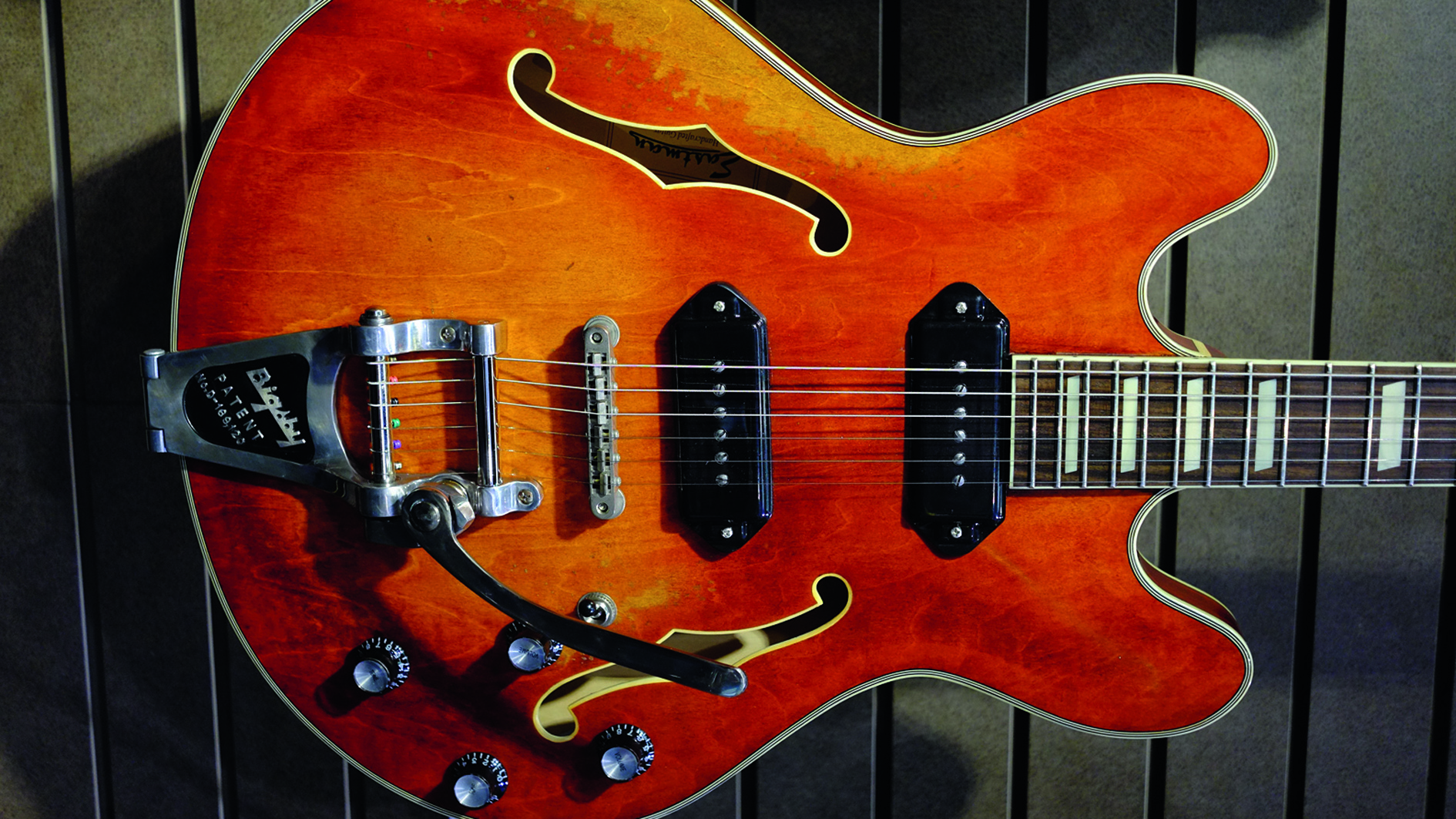
8. Relics Evolve
Earlier this year Martin were showing off their first relic – little surprise considering they were at the forefront of wood-aging with their Vintage Tone System. Apparently they even pondered, “should it smell old and musty?” before concluding in the negative. Suhr has been showing off its Classic Antique Pro Finish guitars which, headstocks aside, look like bashed-up or rather lightly relic’d Strats.
Ibanez too has its relic’d Artcore and Artstar Hollowbodies; new additions this year are the AFV10ATRL single-cut hollowbody with nicely bashed low-gloss cherry red finish (with black and tobacco ’burst options).
Eastman is taking a slightly different route with an increasing range of ‘antique’ guitars finished in the brand’s violin workshop. New for this year is the introduction of a single-cut, the SB 59/v that’s very cool.
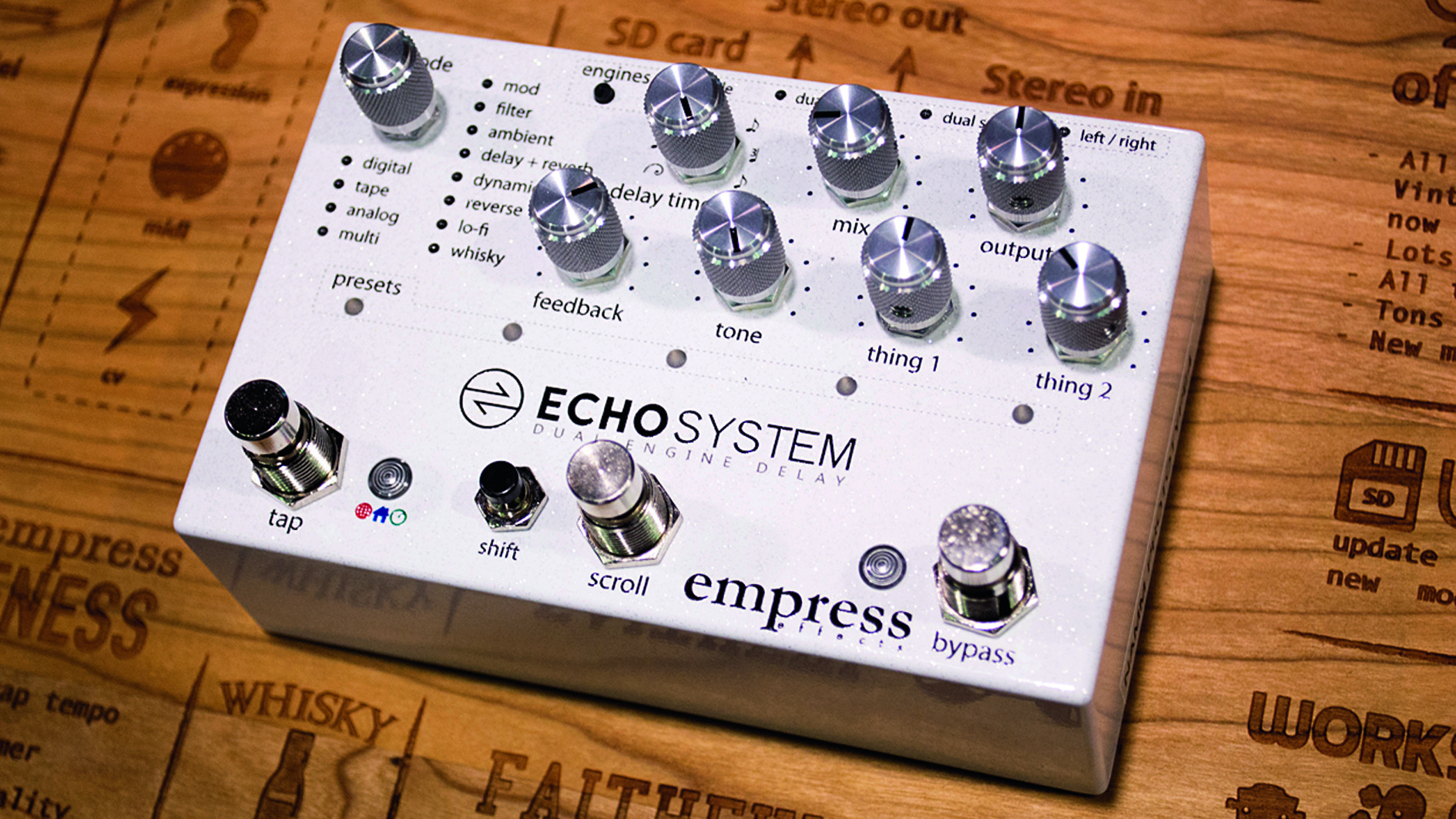
9. Effects Go Deeper
A final trend of note that emerged at NAMM was what might be termed the ‘deep’ effect pedal – a new generation of massively powerful pedals that hold months of sonic exploration inside their small enclosures. One of our favourites is the Empress Effects Echo System Delay, which conjures up captivatingly original soundscapes and ambiences. How? Well, you can run two stereo delay engines at once on this pedal, in series, parallel or mono left-and-right configuration, selecting from more than 25 modes, from ‘Delay & Reverb’ and ‘Tape’ to ‘Reverse’ voices and more.
Over at Chase Bliss Audio we love the Brothers Analogue Gain Stage Pedal. This intriguing pedal has two channels, each loaded with both fuzz and overdrive circuits that have contrasting clipping characteristics, with hundreds of possible tones to explore.
Join us in celebrating World Guitar Day 2017! Get playing, and share your best guitar videos, pictures, tips and stories with hashtags #WGD17 #worldguitarday
Jamie Dickson is Editor-in-Chief of Guitarist magazine, Britain's best-selling and longest-running monthly for guitar players. He started his career at the Daily Telegraph in London, where his first assignment was interviewing blue-eyed soul legend Robert Palmer, going on to become a full-time author on music, writing for benchmark references such as 1001 Albums You Must Hear Before You Die and Dorling Kindersley's How To Play Guitar Step By Step. He joined Guitarist in 2011 and since then it has been his privilege to interview everyone from B.B. King to St. Vincent for Guitarist's readers, while sharing insights into scores of historic guitars, from Rory Gallagher's '61 Strat to the first Martin D-28 ever made.
